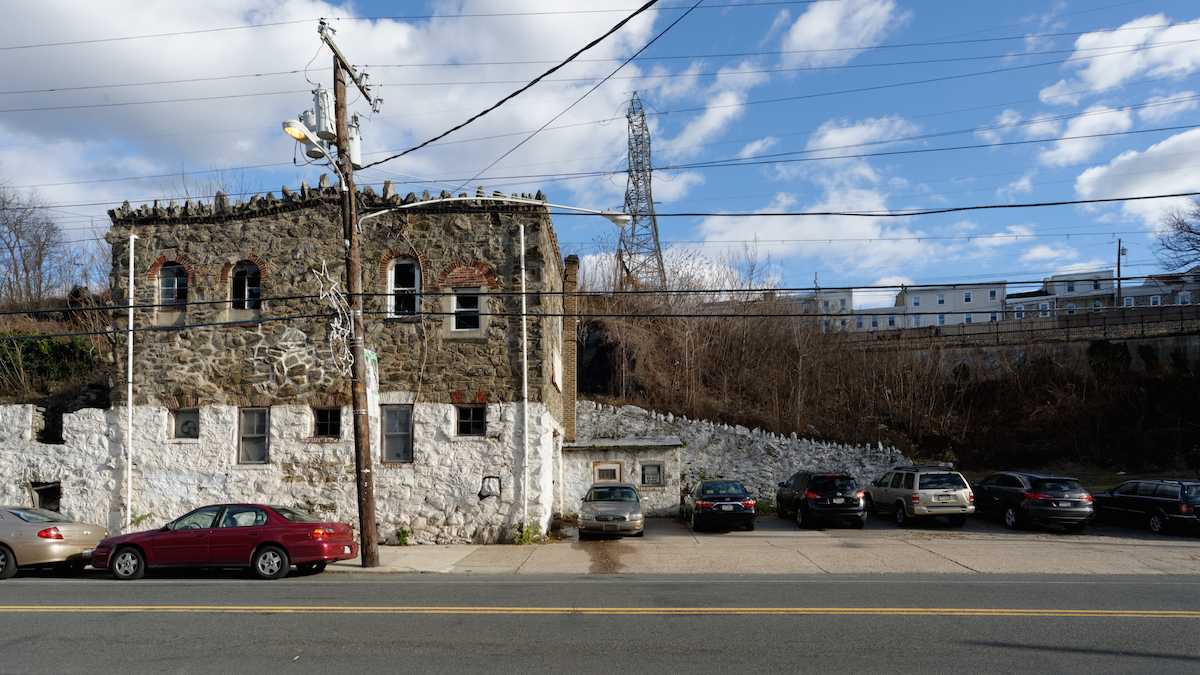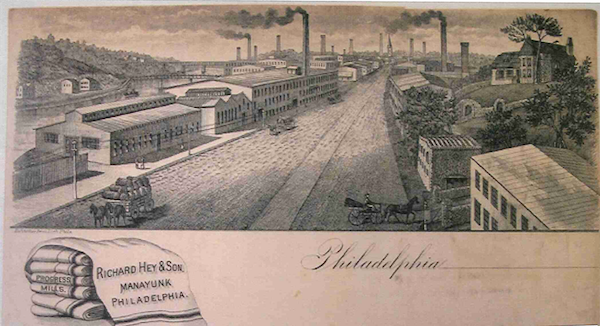After neighborhood pushback, residential development on Manayunk’s Main Street nixed

3811 Main Street (Bastiaan Slabbers/for NewsWorks)
A request for variances to build a 65-unit apartment complex on Manayunk’s lower Main Street, a project that has been opposed by two neighboring civic groups, was denied by the Zoning Board of Adjustment last month.
The board had conducted two special, extended hearings in October and November on the project, which requires a change from industrial/commercial zoning and other variances.
Members of the Wissahickon Neighbors Civic Association voted unanimously against the proposed development at 3811 Main Street, “so we’re happy this isn’t going through,” Dave Wilby, president of the group, said last week.
“We not against some kind of development there. But there is so much residential development already, it’s becoming too densely populated. We’re not objecting to commercial development of the site, and they don’t need zoning changes for that,” Wilby said.
The civic association has also raised concerns about the height of the project. The plan calls for a five-story section and a four-story section. The maximum allowance under the zoning code is 38 feet, and the highest point of the apartments would exceed 79 feet. Neighbors have said their view would be blocked and their property values reduced by the apartment complex.
The Manayunk Neighborhood Council has also objected to the proposed apartments, primarily for safety reasons, MNC president Kevin Smith said.
The site is inappropriate for residential development because of its proximity to the flood plain and the frequently inundated Main Street, he said. “There are no evacuation sites from that location. Without doing something dramatic, like raising Main Street up 10 feet, or finding an evacuation route from behind the buildings, it’s really unsafe for residential development.”
Appeal underway
The attorney for the owners filed a request on Dec. 28 to the ZBA to reconsider its decision.
Attorney William O’Brien represents property owner Catherine Forster, whose deceased husband Stephen ran an auto repair shop in the two-story stone structure on the Main Street site. In his filing to the ZBA, O’Brien includes archival documentation that shows the stone building had been a carriage house that served the mansion owned by Richard Hey, owner of the Progress Mills, a textile manufacturing company before and up to the 1880s.

A 19th century view on Main Street. (Courtesy of Jane E. Ward, Osbourne Library)
Nineteenth-century maps and a 1930s photo in O’Brien’s filings show the Hey mansion looking down on Main Street. O’Brien’s request for reconsideration argues that neighbors have viewed a structure at the top of the hill for generations. Other views from the Wissahickon neighborhood are similar to views of the existing Bridge Five condominiums.
The proposal does not seek relief related to the flood plain, O’Brien also states in the request, because one of the apartments is set back 40 feet from Main Street, and the other is 80 feet from the street.
O’Brien did not return a request for comment for this article.
The proposal for the apartment complex was designed by Stephen Goldner, who developed the Kingsley Court housing on Ridge Avenue in 2014.
Alternative development
Smith, of the Manayunk Neighborhood Council, said there are “ways to stick to the current code and develop the property, but not with as large a project as they’re proposing.”
A compromise, Smith said, would be “some nonresidential solution. This is a well-functioning commercial area now. The buildings [on lower Main Street] are not obsolete or abandoned or unused. Every one of those buildings is occupied.”
After completing its analysis of the site and the concerns over flooding, the MNC is now opposed to any residential development there, Smith said.
Wilby, of the Wissahickon Neighbors Civic Association, said the Forsters are longtime residents and “a part of the neighborhood. We don’t have any problem with them doing something there.” But any changes the owner has suggested have not addressed concerns of residents over “a giant building opposite their homes. We’ve felt that the aesthetic of the neighborhood would be changed, and we fear our property values would go down.”
Smith believes the owner’s request for reconsideration will be denied by the ZBA “because there is no new information to reconsider this case,” he said. “At which point they can appeal to the Court of Common Pleas, or let it go.”
WHYY is your source for fact-based, in-depth journalism and information. As a nonprofit organization, we rely on financial support from readers like you. Please give today.




